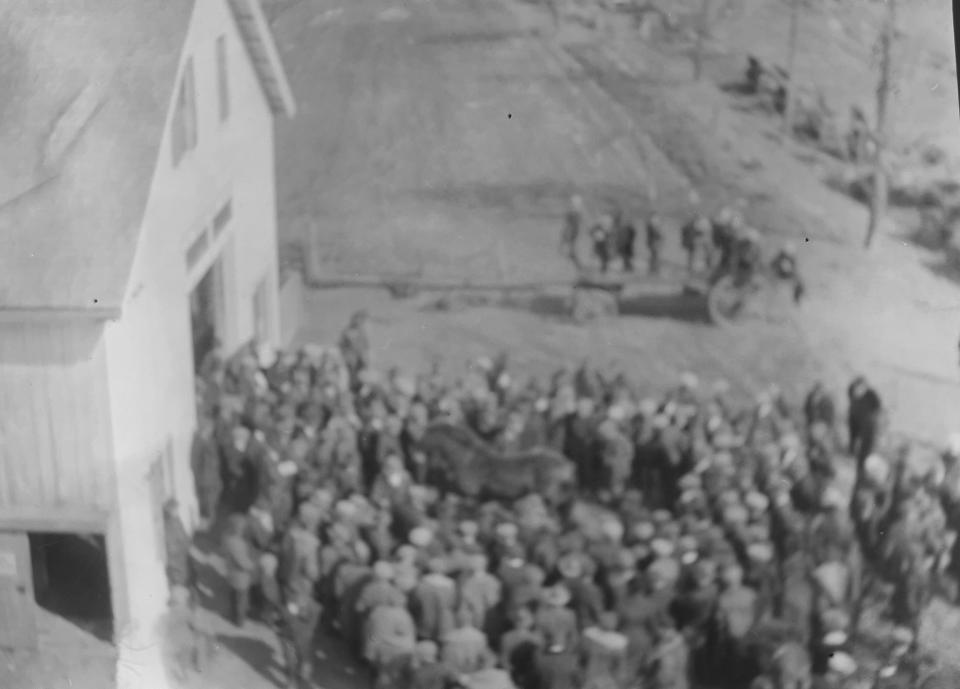Historically Speaking: North Dakota’s workhorses come to Exeter
The Great Depression started early in some parts of the country. New Hampshire had been suffering from an economic downturn since just after World War I. Things were far worse in North Dakota.
Historian Elwyn Robinson has written, “The 1920s in North Dakota were a time of readjustment. The stimulus of pioneering had vanished. Settlement of the semiarid state by people from humid regions had left a heritage of maladjustment, of institutions unsuited to the nature of the country.”
Unlike New Hampshire, which is small, North Dakota has vast territory. The rush for homesteading in the late 1800s had slowed and years of drought found many leaving the state. “Because they had anticipated a denser population and a greater production of wealth than the state has yet attained, the pioneers created too many farms too many towns, too many schools, churches, and colleges, too many counties and too much government, too much railroad mileage, too many banks and too much debt.” Robinson called this the “Too-Much Mistake.”

To improve the economic strain in the state, many North Dakota farmers joined cooperatives and the North Dakota Farm Bureau organized as part of the larger American Farm Bureau. Concerns with grain prices took precedence, but the question of raising ready cash was also at the forefront. Was there some unused resource that might pull in some quick income? It seems there were: horses.
It turns out, North Dakotans owned more autos than most states. “In 1913, North Dakotans owned only 12,075 automobiles, but by 1920 they owned 92,000, and 57% of the state’s farmers had them.” Robinson cites that by 1930, the percentage of farmers owning cars or tractors had gone up to 87% - “one for every 3.7 persons.” The national average was one for every 5.3 persons. So, if the state no longer needed horses for transportation or labor, they could be sold in other parts of the country.
Western horses had an excellent reputation back east. These weren’t wild mustangs, they were solid, well-broken-in, reliable workhorses. Local farm bureaus, primarily in New Hampshire and Vermont, began making arrangements to bring some of these well-mannered horses to auction. New England farmers were still happy to use horse labor. The region has abundant hay resources, unlike the arid plains, and is compacted into a smaller area.
The auctions began in 1922. Two years later, one of the sales came to Exeter.
“Thirty heads of horses direct from Dakota farmers will be sold at auction under a positive guarantee. The horses are accustomed to all classes of farm work and are mostly Percheron and Belgian breeding from 5 to 9 years old and weigh from 1200 to 1700 pounds,” ran an advertisement in early April of 1924 in the Exeter News-Letter. “Practically every horse sold by us in the past two years has given splendid satisfaction. Ask your County Farm Bureau about our sales.”
Finding the advertising was a tremendous help to the Exeter Historical Society. The organization received a collection of nearly two thousand slides in 2022 associated with the Tufts family of Exeter. The patriarch of the family, James Arthur Tufts, Sr., was a long-time teacher at Phillips Exeter Academy. His son, James Arthur Tufts, Jr., went into agriculture and ran the Granite State Nursery on High Street. Among the images were three that looked down on a gathering of people surrounding various horses. Taken from the second story of the farm’s house, the photos were too fuzzy to be featured in the annual Historical Society calendar but clear enough to depict some type of local event. The dates matched those of a cryptic entry in James’ sister, Betty’s diary for the year 1924: “Saturday, Apr. 12, 1924. Gave 5 lessons. Over to Jim’s on a 2 o’clock trolley with Father & Aunt Sue to see the horse auction. 30 horses from N. Dakota. Mother went to sta. to see them come.” Betty was a frequent horseback rider, but these horses would not have suited her. Percheron and Belgians are enormous working breeds – the kind you might see at a horse-pulling competition at the fair.
The auctioneer arrived from North Dakota with the horses. His name was Frank Hyland, who was not only the auctioneer (indeed he was so skillful at the art that he often taught it to aspiring students) but was also serving as sitting Lieutenant Governor for the state of North Dakota. The Exeter News-Letter described him as “efficient” after “he sold the entire 28 head in quick time at prices ranging from $100 to $300.”
The sale fulfilled two purposes: high-quality western horses came to New England while bringing in much-needed cash to the strapped counties of North Dakota. Buyers were assured that “a committee appointed by the Rockingham County Farm Bureau will inspect and hitch all the horses prior to the sale and will report on each horse at the sale.” How well the horses served after the sale is not recorded, however at least one registered its discontent: “An unfortunate incident was the injury to Mr. Lloyd Snell, of Brentwood, who was kicked by a horse he had bought, several ribs being fractured. He was taken to Exeter Hospital.”
Barbara Rimkunas is the curator of the Exeter Historical Society. Support the Exeter Historical Society by becoming a member! Join online at: www.exeterhistory.org.
This article originally appeared on Portsmouth Herald: Historically Speaking: North Dakota’s workhorses come to Exeter

